Inpatient Experience Survey 2018: national results
National results of the 2018 Inpatient Experience Survey. Comparisons have been made with the previous iterations of this survey where possible.
This document is part of a collection
4. Admission to Hospital
Summary
- People were generally positive about their admission to hospital, with over four out of five (83 per cent) rating it as "excellent" or "good".
- They also rated most aspects of care and treatment they received in the Accident and Emergency Department ( A&E) positively. Almost nine out of ten (89 per cent) were positive about the overall care and treatment they received in A&E and rated it as "excellent" or "good".
- People were least positive about being kept informed about how long they would have to wait to be seen in A&E; 44 per cent were kept completely informed and a further 31 per cent said that they were kept informed "to some extent".
Overall
When asked to rate their admission to hospital – that is the time taken to get a bed on the ward after arrival at hospital – 83 per cent were positive about it (Figure 4.1). This is broadly similar to the results from previous surveys ( Figure 4.2).
Figure 4.1: Overall rating of admission to hospital, 2018
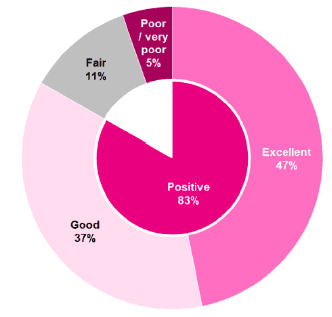
Figures 4.2 : Overall positive rating of admission to hospital
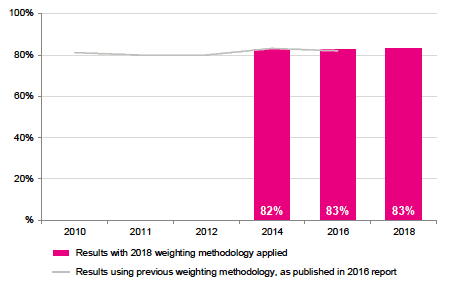
NOTE: Data for the 2010 to 2012 surveys have not been weighted to account for non-response and so are not directly comparable to the 2014 to 2018 surveys.
Emergency or Planned in Advance
People who attended hospital were either admitted as:
- an emergency/urgent case in 62 per cent of cases; or
- had their attendance planned in advance in 38 per cent of cases.
Accident and Emergency
Forty-six per cent of people went to A&E when they arrived at hospital. People who went to A&E were asked about various aspects of their care and treatment while they were there. Around nine out of ten (89 per cent) of people were positive about the overall care and treatment that they received in A&E (Figures 4.3 and 4.4).
Figure 4.3: Overall rating of care and treatment in A&E, 2018
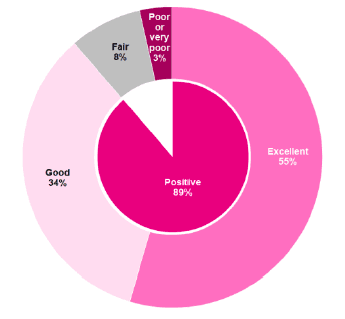
Figures 4.4 : Overall positive rating of care and treatment in A&E
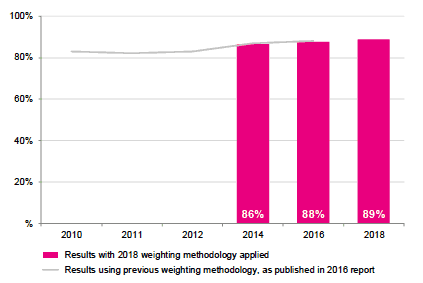
NOTE: Data for the 2010 to 2012 surveys have not been weighted to account for non-response and so are not directly comparable to the 2014 to 2018 surveys.
Figure 4.5 shows people's responses to particular aspects of their care in A&E in 2018, and Figure 4.6 provides trends over time for the same questions.
Eighty-five per cent of people felt completely safe while they were in A&E, which is lower than the equivalent figure in 2016 of 88 per cent.
Figure 4.5: Summary of responses to care and treatment in A&E, 2018
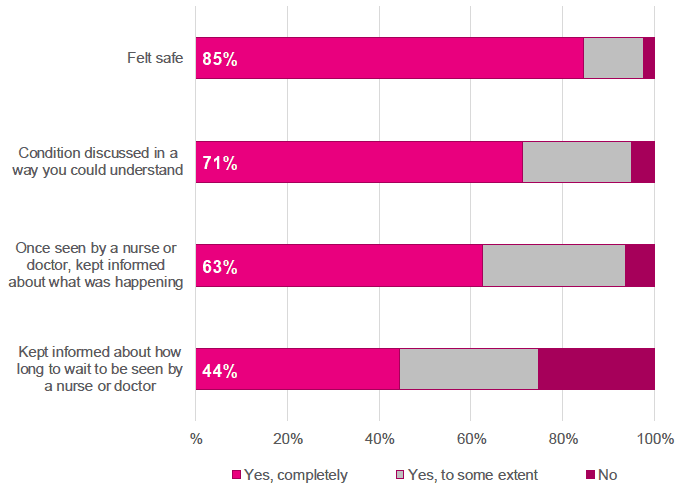
Figure 4.6: Care and treatment in A&E, percent positive trends over time
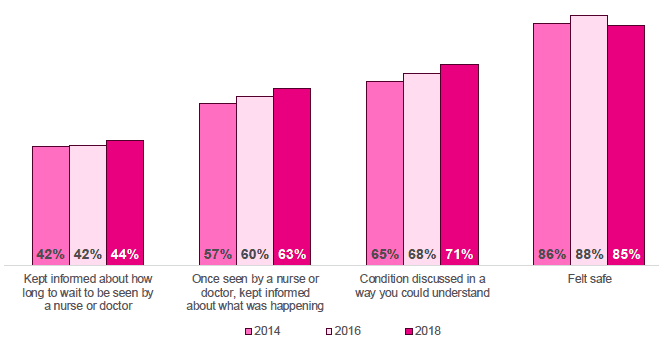
People were least positive about being kept informed about how long they would have to wait to be seen; 44 per cent were kept completely informed and a further 31 per cent said that they were kept informed "to some extent".
However, once seen by a doctor or nurse, 63 per cent of people said that they were kept completely informed about what was happening, and 71 per cent said that the doctor or nurse discussed their condition in a way that they could completely understand. People were more positive about these two aspects of their care than they were in 2016.
Attendance Planned in Advance
People whose attendance in hospital was planned in advance were asked if they were kept informed about how long they would have to wait to be admitted after being referred. Sixty-two percent said that they were kept completely informed, with a further 30 per cent feeling that they were kept informed to some extent.
Contact
Email: PatientExperience@gov.scot
There is a problem
Thanks for your feedback